Nombre:
Buda Maitreya de Beopjusa
Otro:
Localización:
Ver mapa más grande
Récord: 33 m
Tipo: Estatuas
Categoría: Buda Maitreya
Foto:
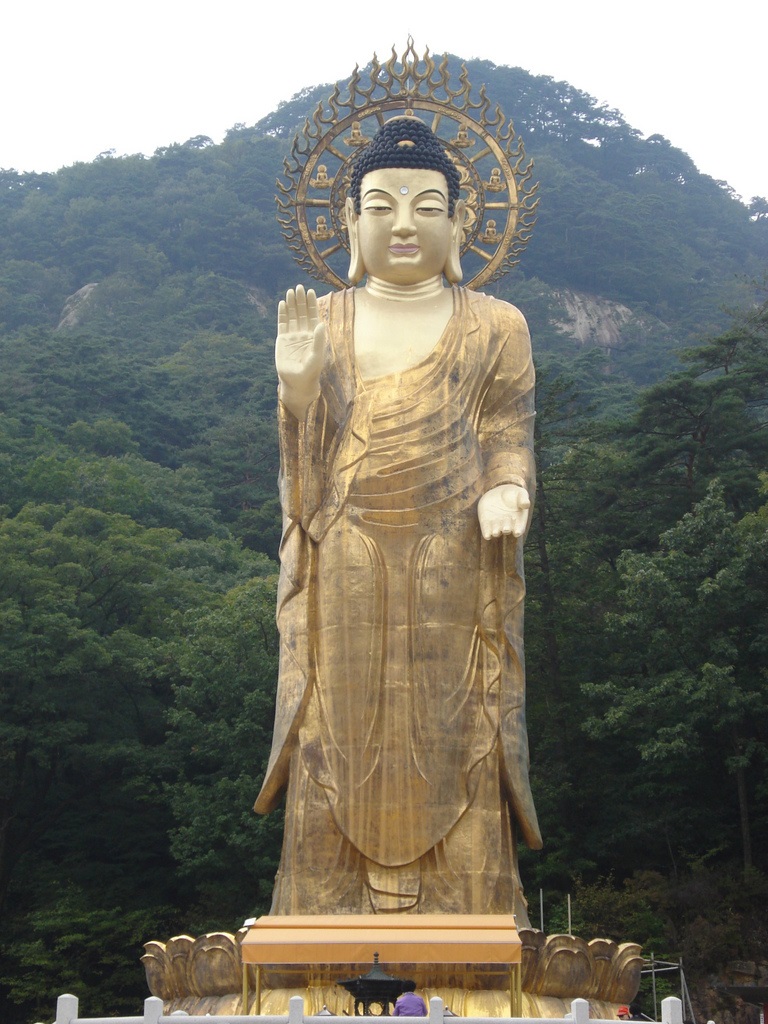
Voto:
Continente: Asia
País: Corea del Sur
Localización: Naesongni-myeon, Provincia Chungcheongbuk-do
Año: 1990
Estado: Terminado
Descripción:El parque nacional de la montaña Songnisan se compone de las montañas Songnisan y Hwayang, Seonyu y valle Ssanggok. La montaña Soknisan tiene el panorama más hermoso de Corea. La montaña Sognisan, uno de los 8 panoramas de Corea, se encuentra en el medio de la cadena Sobaeksanmaek que se extiende hacia el sudoeste. El pico de granito de la montaña Songnisan se extiene hacia lo alto y Toejeokam tiene una profundidad que remarca un gran contraste ente el pico y el valle. La montaña Songnisan también recibe el nombre de Sogeumgangsan. Sobre la montaña Songnisan se encuentra uno de los templos más grandes de Corea llamado Beopjusa.
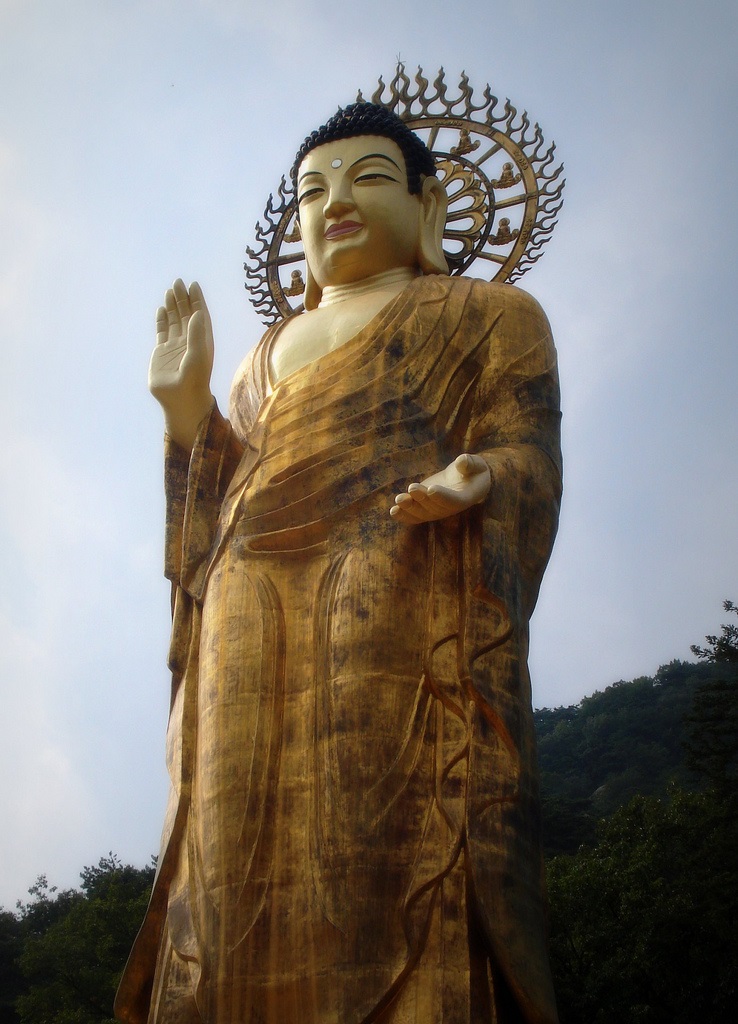
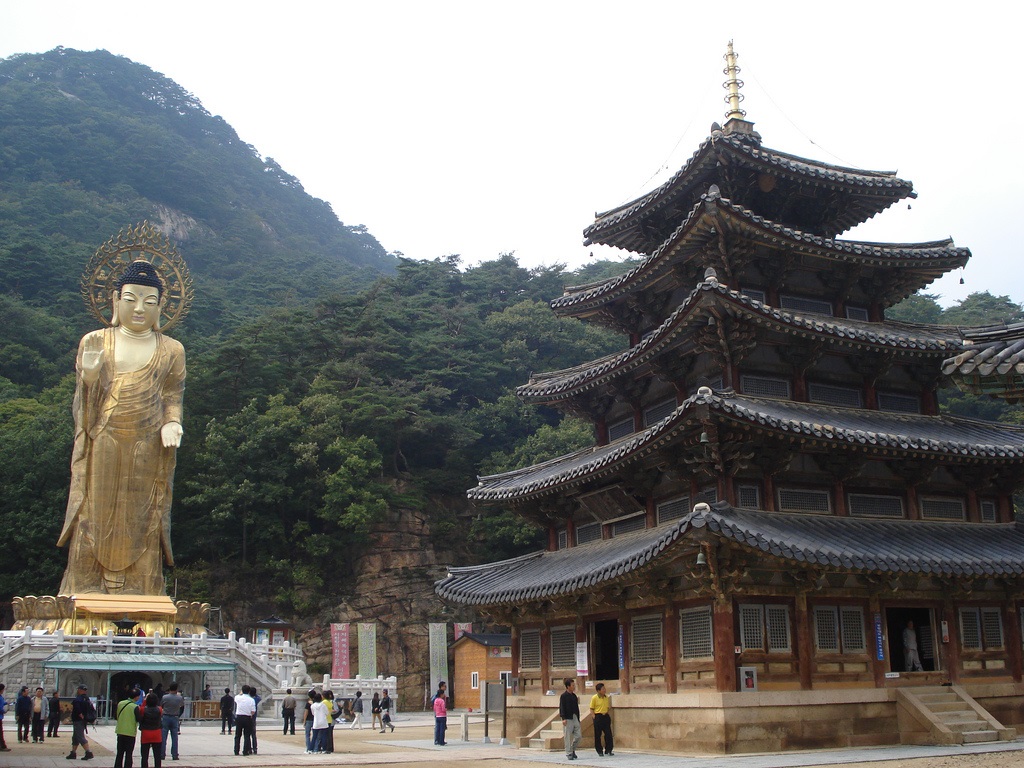
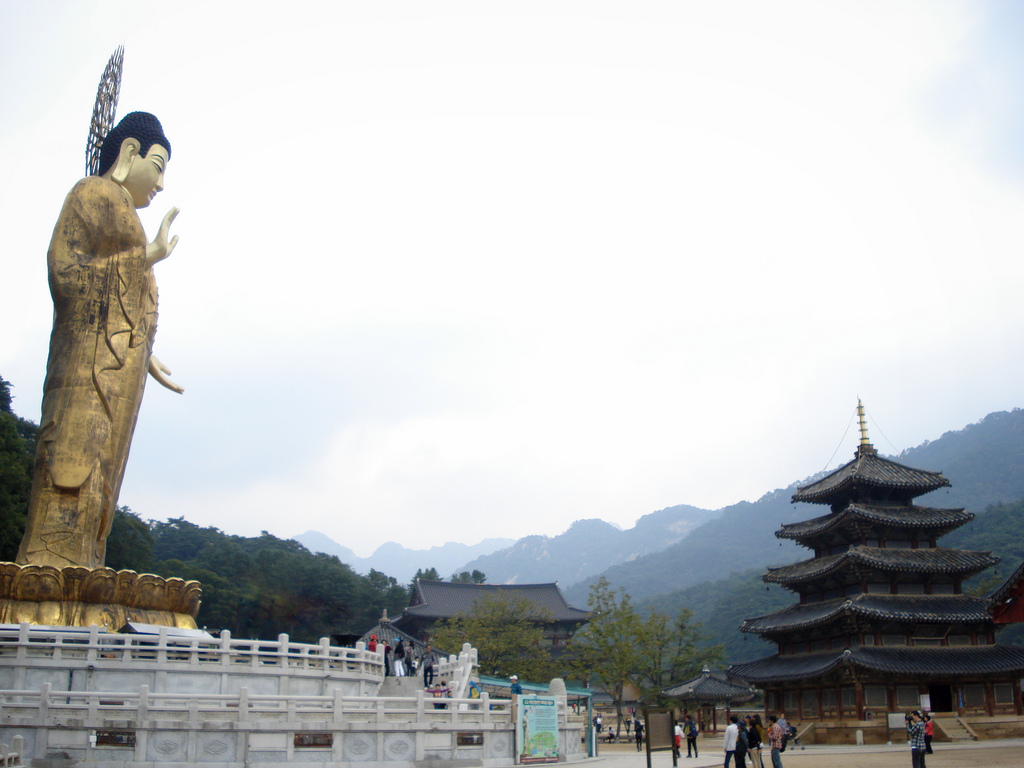
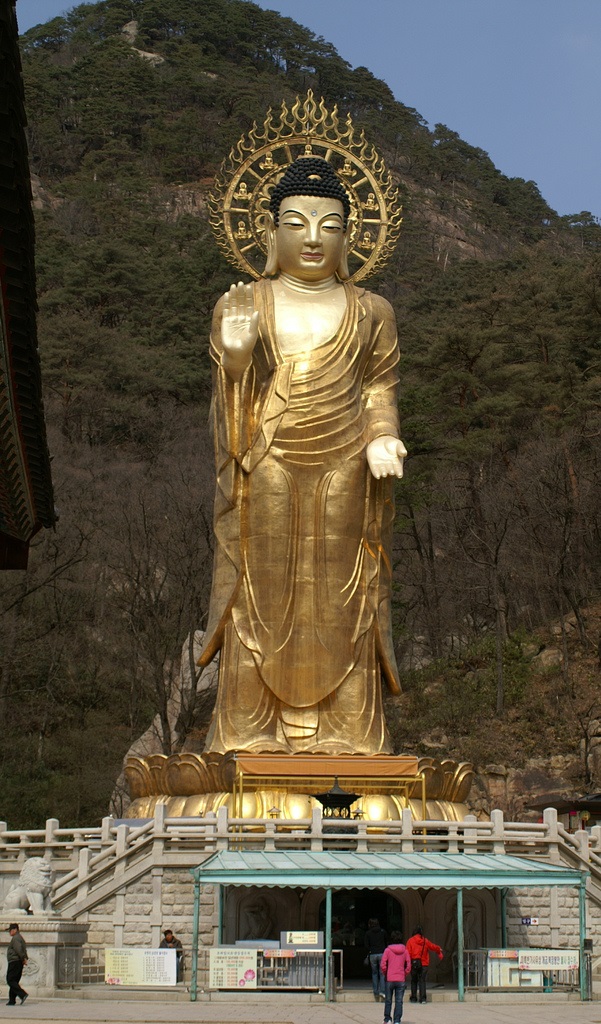
En este templo hay un Maaeyeoraeuisang tallado sobre una roca. Euisang se refiere a la estatua buda sentado y Maaeyeoeuisang significa la forma del tallado de la roca. Al pasar el tiempo, esta forma se ha dañado pero aún se puede apreciar claramente la forma original. En cualquier fotografía tomada en el templo Beopjusa, se puede encontrar el Cheongdongmierukbul, que es la estatua del Buda más grande del mundo.
Ya que la montaña Songnisan posee un gran temmplo, también posee numerosos tesoros y monumentos nacionales propio de su historia de 5.000 años. El templo Beopjusa es una de las joyas de la larga historia de la cultura budista desarrollada en la montaña Songnisan. Los profundos valles de la montaña Songnisan atrae a muchísimos alpinistas todos los años y sus monumentos naturales han hecho de este lugar una de las principales atracciones turísticas. La montaña es hermosa durante todo el año con flores de cerezos en primavera, bosques frondosos de pinos verdes en verano y hojas de arces teñidas de rojo en otoño.
http://www.visitkorea.or.kr/spa/TR/TR_SP_3_1_2.jsp?cid=334645
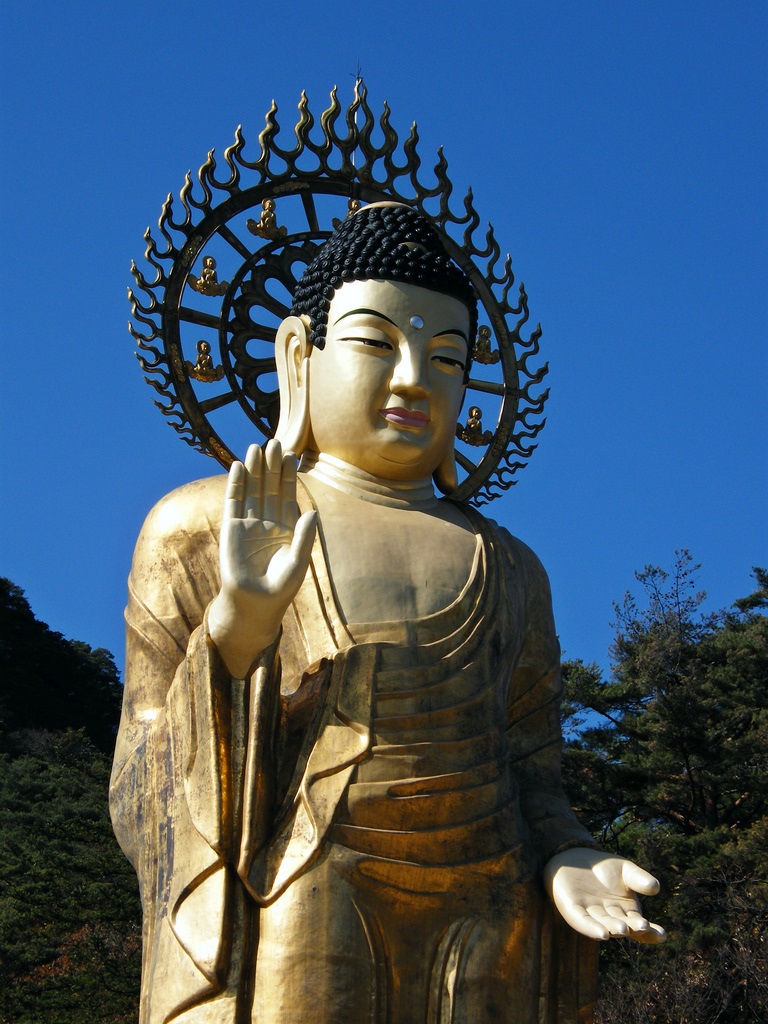
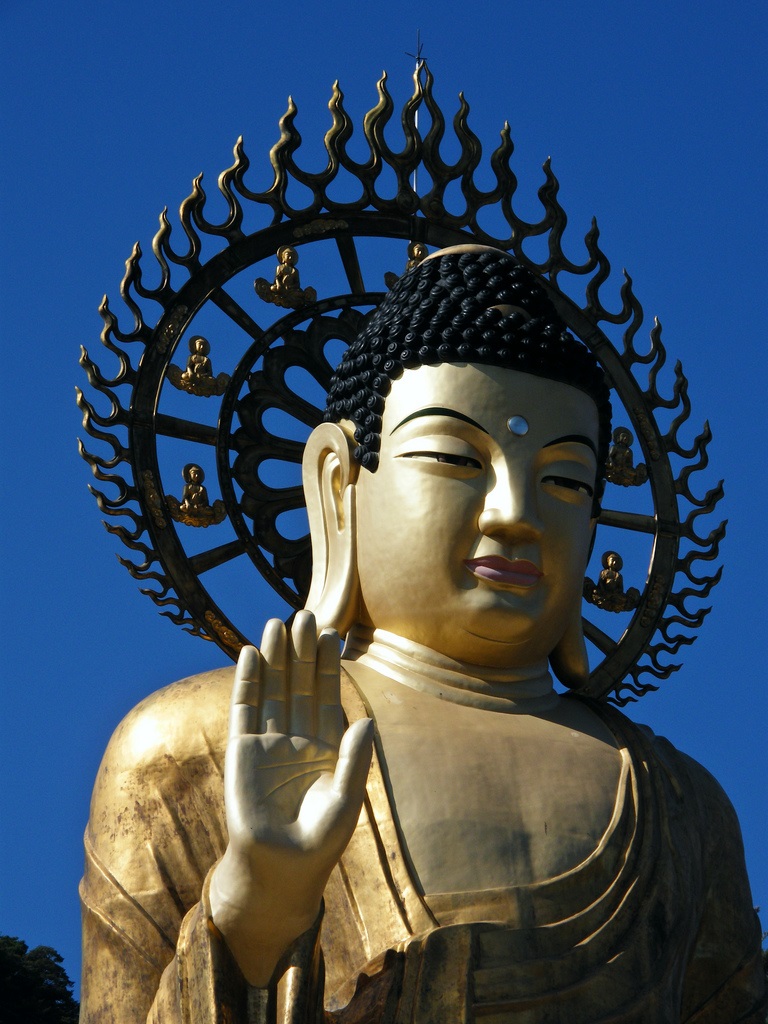
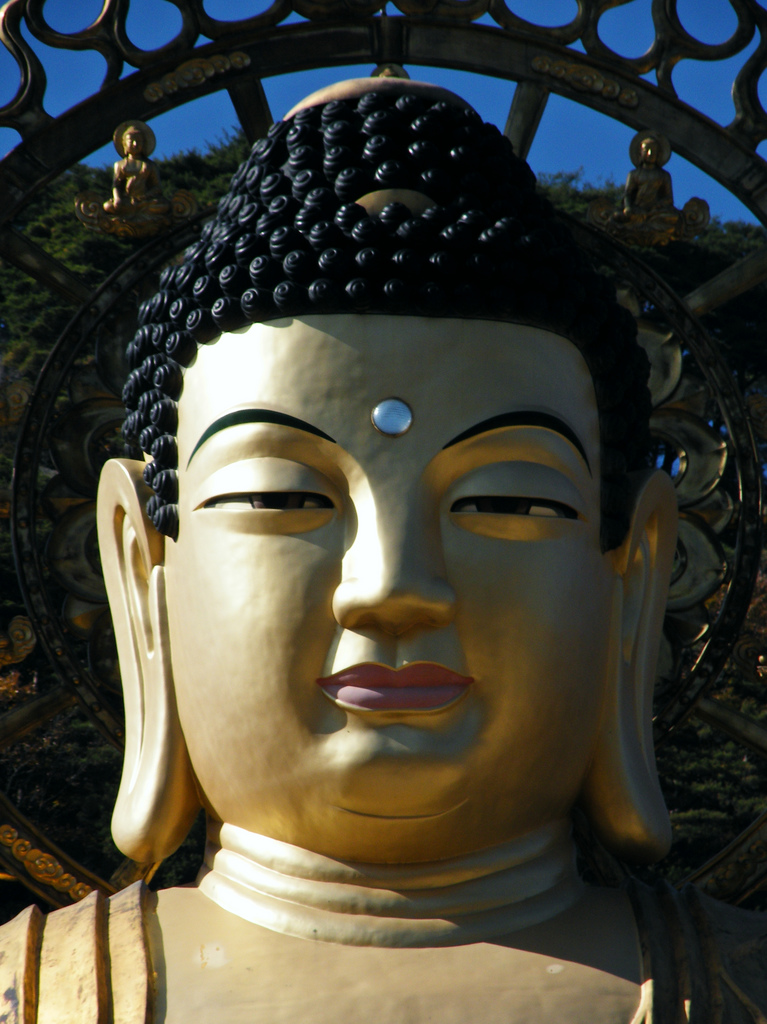
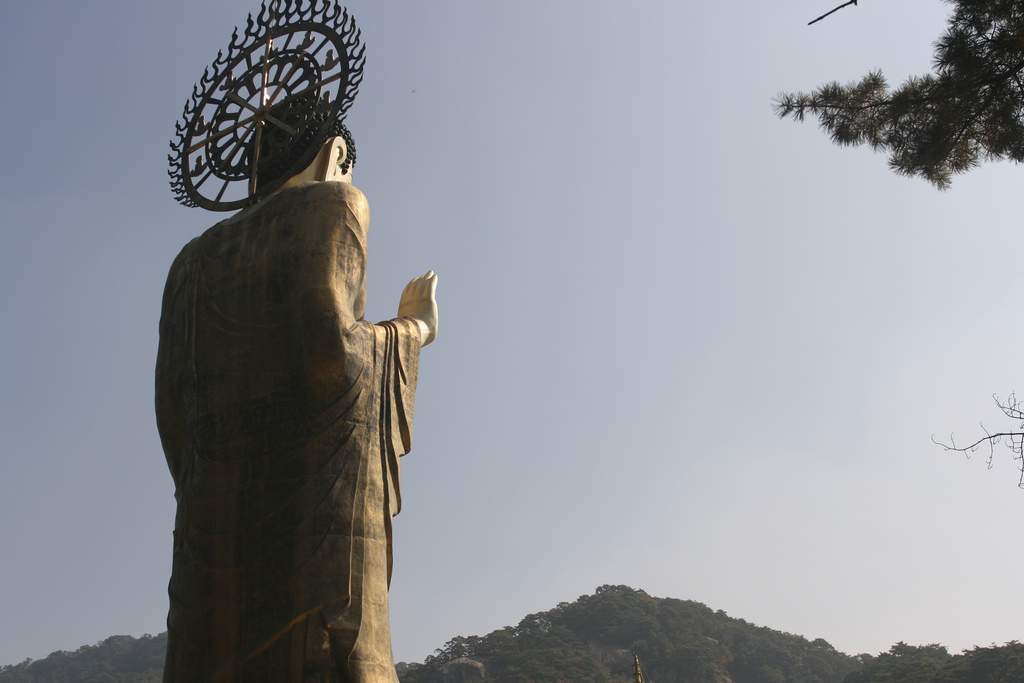
Beopjusa is one of the most celebrated spiritual places and popular tourist attractions in South Korea. Just like Beomeosa Temple located in Busan, the Beopjusa Temple is one of the head temples of the traditional order of Korean Buddhism known as the Jogye Order. This particular brand of Buddhism dates back to the period of the unified Silla Empire. The Beopjusa Temple was originally constructed in the seventh century by a monk named Uishinjosa. It is a magnificent place located in the southwestern foothills of Songni Mountain in South Korea’s North Chungcheong Province. The Palsangjeon Pagoda and Golden Maitreya Statue are the two most recognizable and sought after attractions at the temple, but the entire complex and setting is enchanted and serene.
The Beopjusa Temple is most commonly associated with the worship of the Maitreya Buddha, or essentially, the Buddha in waiting. This entire stream of thinking and belief system stems from a prediction by Gautama Buddha that his teachings would disappear after his earthly death (500 years after to be exact) and that another enlightened one (the Maitreya) would then need to return to reawaken the teachings of the Buddha and reestablish the path to nirvana or enlightenment. The Golden Maitreya Statue signifies and pays homage to the Buddha-to-be in a sense. Part of the way this belief works is that it will not be until the Buddha (Gautama) is literally forgotten and all accounts of his teachings are gone that a need for the Maitreya to come. Buddhism however remains a strong system of belief and faith around the world so perhaps the Golden Maitreya Statue will have to wait for quite some time longer, standing watch over the celebrated temple at Beopjusa.
One of the most appealing parts of a visit to the Beopjusa Temple is the tranquil environment where you can witness the harmony between nature and humanity. Monks have resided on these grounds for millennia and the Songni foothills could not provide a more perfect setting for this spiritual place. Two massive pine trees of the exact same height guard either side of the main entrance to the temple, creating one of the most aesthetically stunning characteristics of Beopjusa. Although the temple was burnt down when Japan invaded the Korean mainland in the late 1500s, some of the artifacts and items remain from some 1,300 years ago, including an iron kettle that used to serve up to 3,000 monks their daily rice. All around the temple you will find ancient inscriptions carved into big boulders near the pine tree-covered hills.
After entering through the main gates, the most celebrated building at Beopjusa can be seen. The Palsangjeon Pagoda stands five stories high and is ornately decorated with stunning reliefs, carvings, and paintings. Another main attraction at Beopjusa is the Jeongipumsong Pine Tree, a tree that is said to be 600 years old. This is one of the most spiritually significant places in South Korea. If you have a chance to visit this part of the county, you should make it a priority to see this magnificent site.
http://www.destination360.com/asia/south-korea/beopjusa-temple
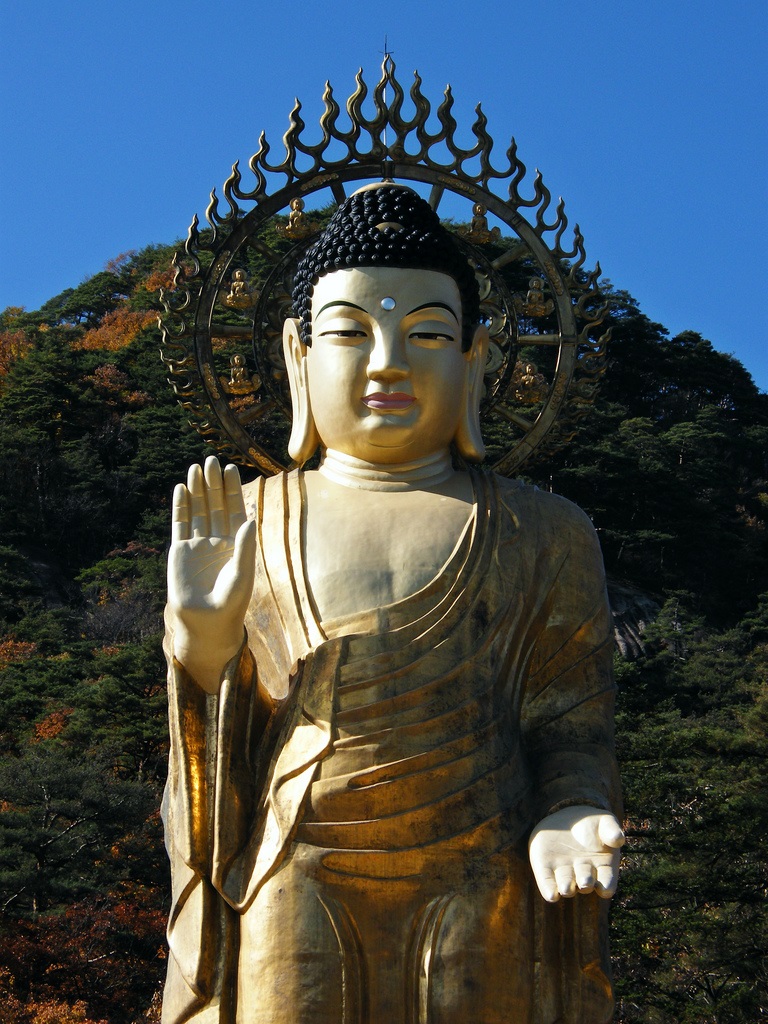
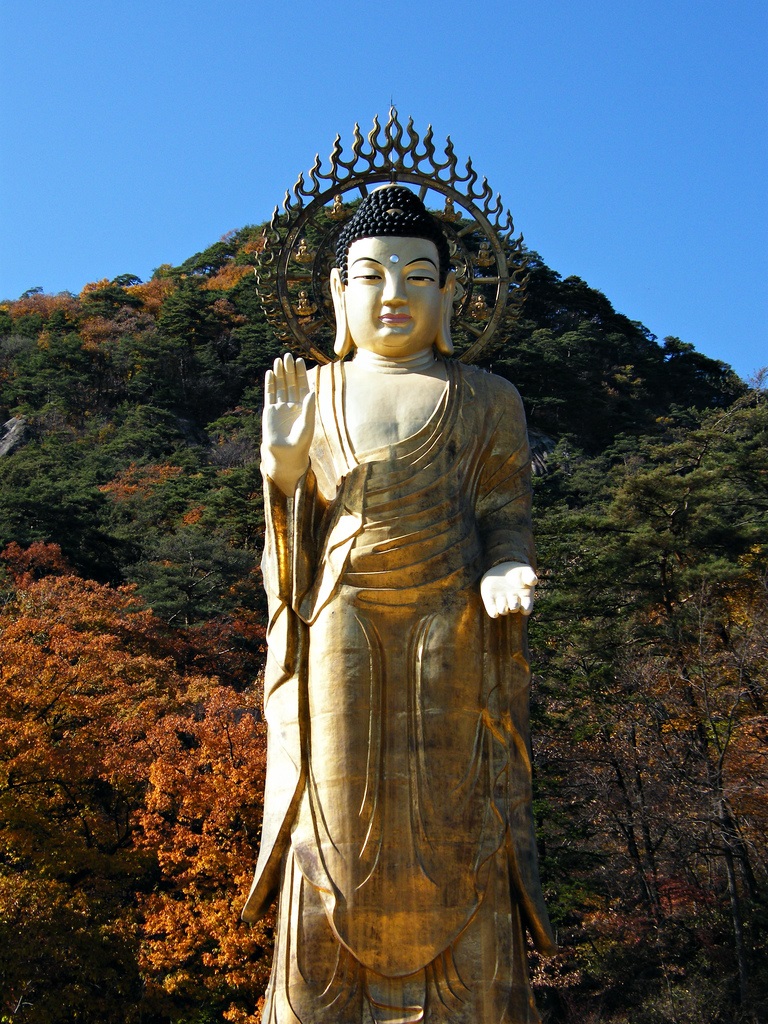
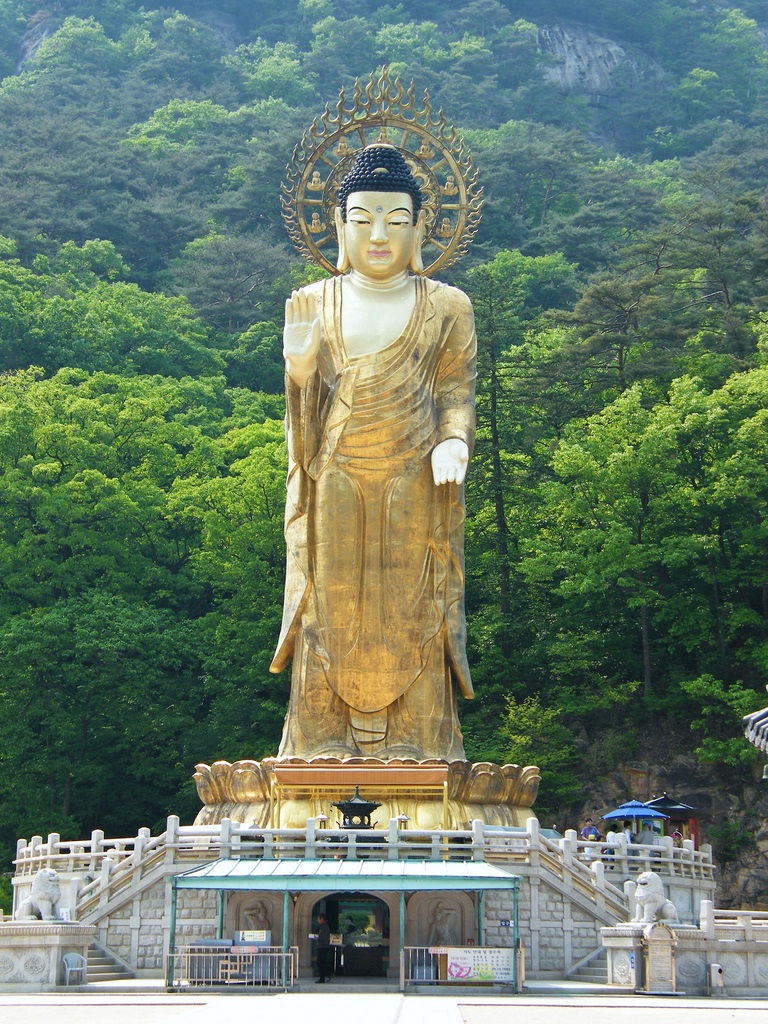
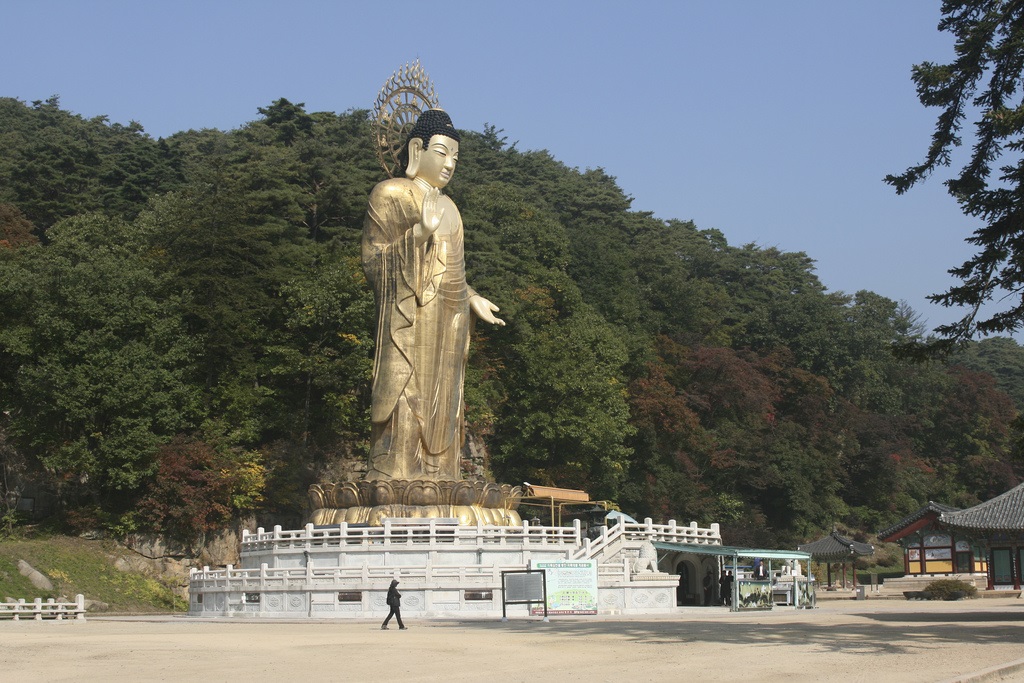
Beopjusa Buddhist Temple
On a recent trip, a friend asked me a tough question: Which of Korea’s temples is my favorite? I pondered the question for a moment. Of course, I haven’t visited all of Korea’s some 100 temples, but from the good number I’ve seen so far, my favorite has to be Beopjusa Buddhist Temple (법주사), a fantastic complex located on the southwestern slopes of Mt. Songnisan (속리산) in North Chungcheong Province.
Beopjusa Buddhist Temple was founded by the great monk Uishinjosa (의신조사) in 553 during the Silla Kingdom. Although the magnificent temple is dedicated to the worship of the Maitreya Buddha, it was built with the hope that ancient Korea’s Three Kingdoms would be reunified. Sadly, Some 14 centuries later millions are still hoping for a unified Korean peninsula.
In the meantime, Beopjusa remains a beautiful place to admire the balance between nature- and human-made things. On the temple’s grounds, distinguished wooden structures dating from the early 1600s are located amidst dramatic, pine-covered peaks while ancient graffiti is etched into huge granite boulders. Upon entering Beopjusa Buddhist Temple‘s main temple gate, a sole towering pine tree stands on either side of the stone pathway.
If you walk past these trees and through another gate, Beopjusa’s grandest building comes into focus. Palsangjeon (팔상전), a five-story pagoda, is the only one of its kind left in Korea. The 22.7-meter tall blue tower was originally built in 553, but rebuilt in 1624, after the entire temple compound was destroyed during the Japanese invasions of the late 16th century.
But while Beopjusa’s wood buildings easily burned, its stone and iron works endure. Three of my favorites date from the eighth century. The Beopjusa Seogyeonji (법주사 석연지) is an octagonal pagoda with a cloud-motif decorating its pedestal. On top of it is a huge lotus-shaped pond. Another treasure is the Two-Lion Stone Lantern, which was built in 720. But maybe most curious of all is an enormous iron pot. Cast during the Goryeo Dynasty, it’s said to be big enough to cook rice for 3,000 monks, which is how many were lived at Beopjusa centuries ago.
More recently constructed is the Golden Maitreya Statue of National Unification. In 1990, at a cost of $4 million, the 33-meter-high, 160-ton Buddha was erected. Covered in gold leaf, the Buddha was made possible by over 30,000 donations. Sitting at the site of the original temple’s main hall, it’s an impressive addition that complements the site.
Outside the temple complex but nearby are a few other great sights. The Jeongipumsong Pine Tree (정이품송) is said to be about 600 years old. The tree was granted a ministerial title when it reportedly lifted its branches in order to let King Sejo’s palanquin pass in the mid 15th century. Sadly, in recent years several branches were damaged by snow and ice, though what remains is still beautiful.
Of course, being set on the side of Mt. Songnisan, several hiking trails are accessible. Although you probably won’t ride to the top of Munjangdae (문장대) in a coach like King Sejo did in 1464, it should only take you a couple of hours on foot.
http://discoveringkorea.com/090415/beopjusa-buddhist-temple/
http://www.flickr.com/photos/keithmaguire/tags/songnisan/
http://www.flickr.com/photos/anjee/tags/beopjusa/
http://www.flickr.com/photos/stirwise/tags/beopjusa/
http://www.flickr.com/photos/kernbeisser/tags/beopjusa/
http://ko.wikipedia.org/wiki/법주사
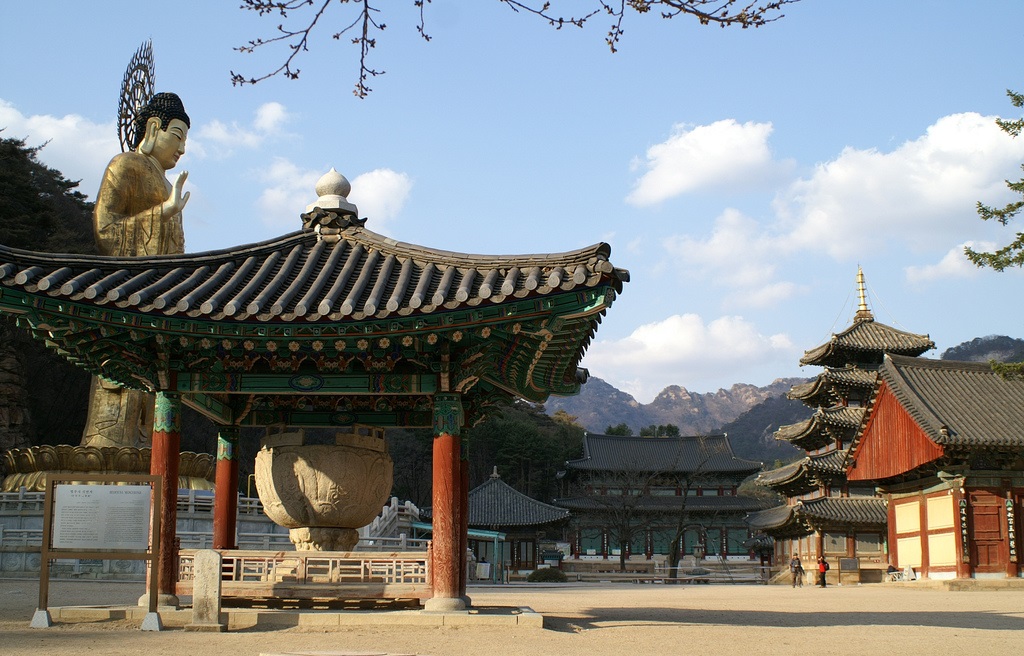
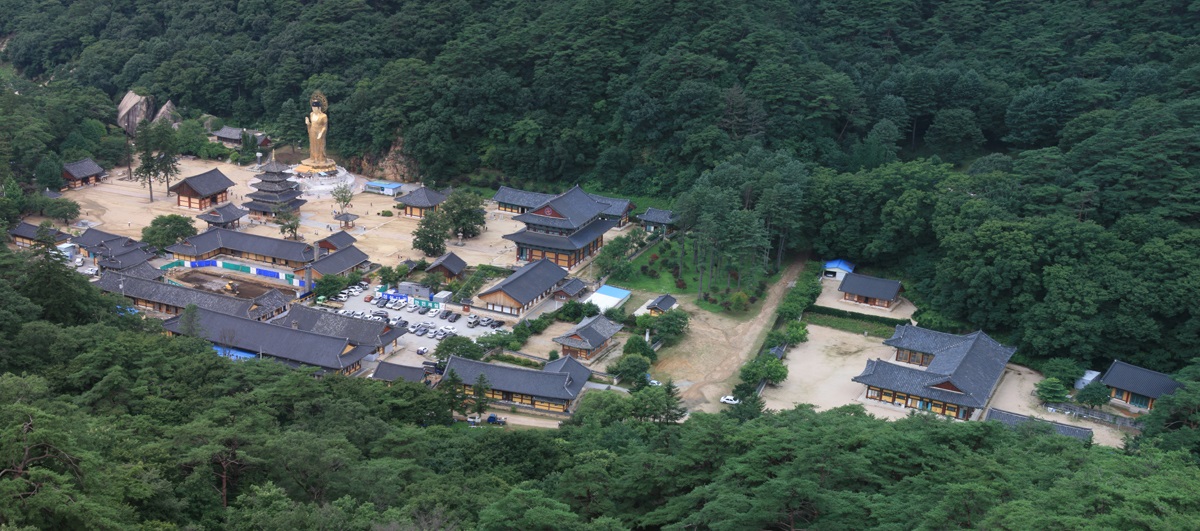
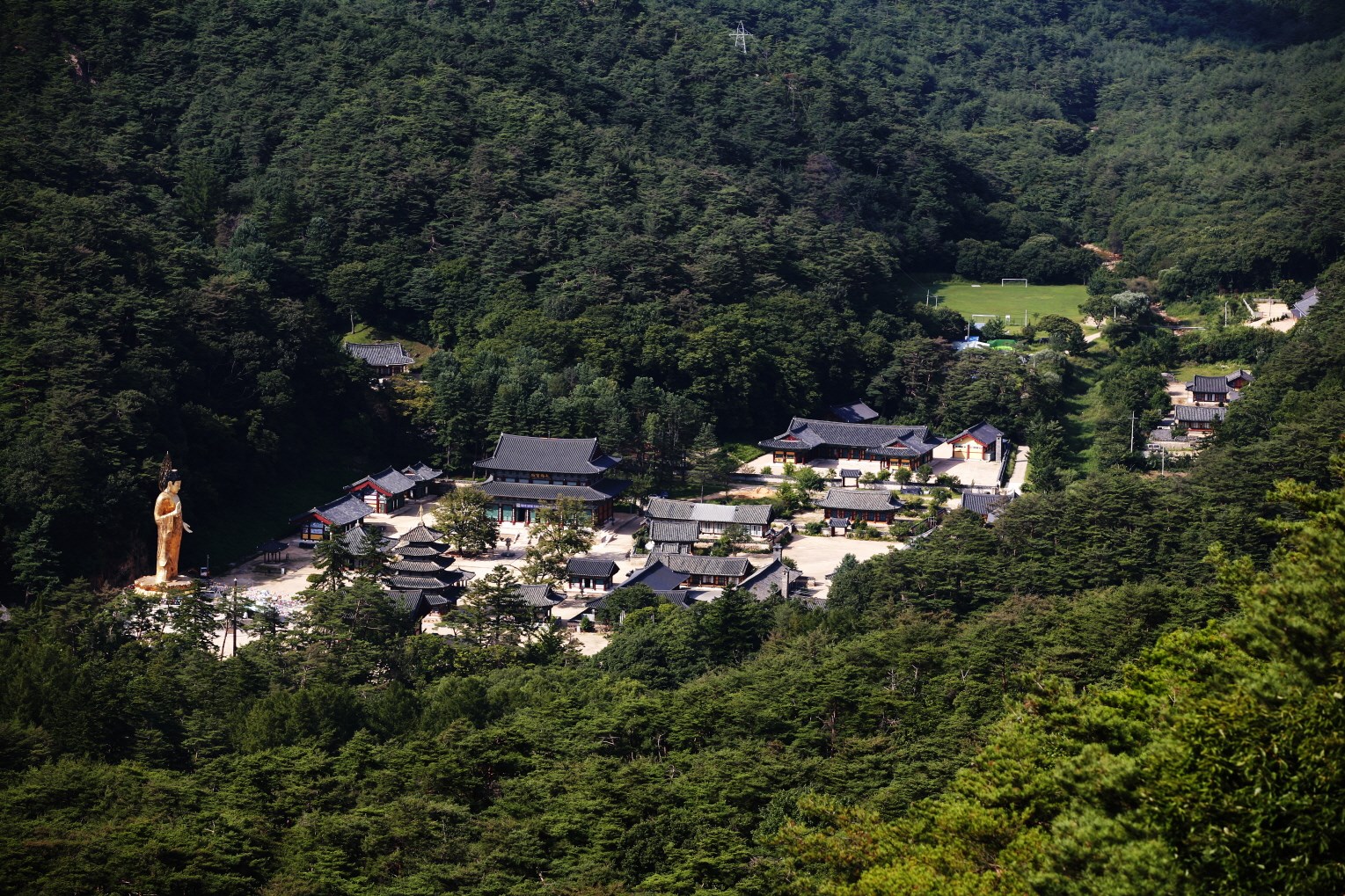
Vídeo:
Contador: 6726
Inserción: 2013-11-05 10:40:41
Lugares a visitar en un radio de 100 km (en línea recta)
Mapa de los lugares a 100 km (en línea recta)
Mostrando Registros desde el 1 hasta el 0 de un total de 0
Visitas |
Más visitados Basílica de San Marcos 154367 Catedral de Notre Dame (París) 143684 Torre de Pisa 131127 Monte Saint-Michel 100283 Presa de las Tres Gargantas 80704 |
Incorporaciones |
Comentarios hazola Cúpula de la Roca gracias me... gera Buenos Aires las mejores fotos de la mejor ciudad del... Daniel M. - BRASIL San Francisco ... PEQUE Presa Chicoasén SERA QUE ALGUIEN ME PUEDE DAR MAS INFORMACIÓN DE ESTE PROYECTO ESTUDIO EN LA UNACH Y ES PARA UN... Mery Huaca Pucllana Muy interesante, muy buena la información y... |
 Tweet
Tweet


